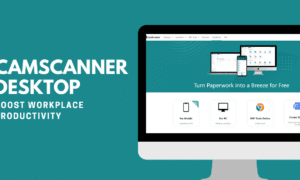Introduction
Every company, no matter how big, runs risks that can cause data loss and disrupt business processes. Whether from technology failures, cyberattacks, power outages, or natural disasters, the effects of a disaster can be broad. Supported by trustworthy disaster recovery solutions, a well-considered disaster recovery plan not only reduces downtime but also helps to maintain customer trust and brand reputation.
Particularly small enterprises have significant stakes. Restless recovery plans are quite vital given limited resources. They also reflect efficiency. Modern solutions such as offsite data backup storage and disaster recovery help businesses guarantee operational continuity and data integrity, utilizing investments. Similar scalable solutions catered to the particular needs and financial limitations of smaller businesses are provided by disaster recovery services for small businesses.
Why Disaster Recovery Services Matter
Minimizing Downtime
Time is of the vital nature when a crisis hits. Your systems are down longer the more income you lose and more damage your reputation suffers. Through fast data and system restoration, disaster recovery services seek to lower downtime. Effective offsite data backup storage and disaster recovery plans will help your company quickly resume operations even in the presence of unplanned events.
Safeguarding Data Integrity
Among the most priceless tools any company owns is data. A strong disaster recovery strategy guarantees that, during a crisis, your data is not only backed up but also stays uncorrupted and safe. Companies add even more defense against data loss from physical damage, cyber attacks, or inadvertent deletion by using offsite data backup storage and disaster recovery methods.
Enhancing Business Resilience
Funding disaster recovery programs increases organizational resilience. Knowing that your company can weather and recover from disasters gives consumers, staff, and investors hope. Customizable solutions that fit the risk profile and operational requirements of smaller businesses allow specialized disaster recovery services for small businesses to guarantee that every element of your recovery strategy is both efficient and successful.
Defining Your Disaster Recovery Objectives
Defining your disaster recovery goals is vital before choosing a service. Think about these questions:
- Which vital systems and data calls for security?
List the systems, databases, and procedures essential for running your company. - How much downtime is reasonable?
To estimate reasonable limitations for downtime and data loss, create recovery time objectives (RTO) and recovery point objectives (RPO). - What possible risks exist for your company?
Evaluate dangers from technology breakdowns, human mistakes, cyberattacks, and natural disasters. - Under what financial restrictions do you find yourself?
Particularly for small enterprises, financial concerns take front stage. Search for disaster recovery options for small organizations providing reasonably priced solutions without sacrificing quality.
A clear understanding of these factors allows you to develop a strategy that aligns with your business’s risk profile and operational needs.
Evaluating Disaster Recovery Providers
Use the following factors while selecting a disaster recovery service provider to guarantee a strong solution catered to the requirements of your company.
Proven Experience and Track Record
An excellent vendor will have a lot of knowledge in handling disaster recovery for companies much like yours. Review their customer quotes and portfolio. Has the provider effectively put offsite data backup storage and disaster recovery into use for another company? Do they provide a case study or recorded proof of successful recovery in trying conditions?
Comprehensive Service Offerings
From data backup and restoration to live recovery and business continuity planning, the finest disaster recovery companies provide complete solutions covering all aspects. Seek services including:
- Automated and Regular Backups:
Ensure the provider offers automated backup schedules for minimal human intervention. - Cloud-Based and Offsite Storage:
Check if they incorporate offsite data backup storage and disaster recovery to safeguard your data in multiple locations. - Scalable Recovery Options:
The provider should have solutions that cater to the evolving needs of your business, whether you are a small startup or a growing enterprise. - 24/7 Monitoring and Support:
Round-the-clock customer support is crucial during a crisis. Evaluate the responsiveness and technical expertise of the provider’s support team.
Security and Compliance
Data security is not negotiable. Make that your prospective supplier complies with industry rules (including GDPR, HIPAA, etc.) and uses rigorous security practices. To protect your data, a respectable provider will apply encryption, safe transmission methods, and frequent security assessments. For offsite data backup systems and disaster recovery systems, where data is sent and housed off-site, this is extremely crucial.
Flexibility and Customization
Every company has different needs. Top-notchers in catastrophe recovery give flexible solutions. The provider should be versatile enough to satisfy your particular needs, whether your need is for more sophisticated recovery solutions for bigger operations or customized disaster recovery services for small business packages. Seek out options that let you change your scale depending on your changing wants without paying outrageous expenses.
Cost-Effectiveness
For many companies—especially small ones—cost is a major consideration. Although you should spend on trustworthy recovery programs, be sure you are obtaining value for your money. Examine long-term contracts, compare pricing strategies, and weigh the possible downtime expenses against the cost of the service. Seek out companies that let you pay only for what you need and present clear pricing policies.
Integration with Existing Systems
The answer for disaster recovery should fit your current IT setup perfectly. Fast implementation and flawless functioning depend on a provider’s fit for your present hardware, software, and networks. Whether your intended use of offsite data backup storage and disaster recovery is as part of a larger IT strategy or as a stand-alone service, be sure the provider’s technology is adaptable and versatile.
Implementing a Disaster Recovery Plan
Implementing your disaster recovery plan comes second once you have selected a provider. This phase is crucial since it turns abstract protection into doable, pragmatic actions.
Assessing Current IT Infrastructure
Start by carefully evaluating your present data storage, network architecture, and IT systems. Point up areas needing work and vulnerabilities. This assessment enables the formulation of a catastrophe recovery strategy covering all important facets of your company operations.
Planning and Documentation
Create a thorough disaster recovery plan, including every phase—from first data backup to complete restoration. Documentation should feature:
- Disaster Recovery Policies:
Clearly stated procedures outlining data backup methods, frequency ofupdatese frequency, and who oversees the recovery process. - Emergency Response Procedures:
Including communication plans and roles for every team member, step-by-step instructions guide you through a disaster. - Testing and Updates:
You really should routinely test your disaster recovery strategy. Plan fictitious crisis events to guarantee effective recovery, and ensure that every team member knows their roles. Change your IT infrastructure and routinely update the strategy depending on test findings.
Data Backup and Offsite Storage
Reliable data backup is one of the cornerstone of a good disaster recovery strategy. Here is where disaster recovery and remote data backup storage find application. Storing backups on geographically separated sites or cloud-based services reduces the possibility of data loss resulting from localized events. Make sure your provider regularly upgrades backups and provides encrypted offsite storage.
Training and Awareness
Your disaster recovery strategy is only as good as the staff putting it into effect. Organize training courses for all pertinent staff members so that, in an emergency, everyone knows the procedures and their corresponding obligations. The difference between a quick recovery and protracted downtime might often be awareness and readiness.
Best Practices for Disaster Recovery Success
Regular Testing and Drills
Plan frequent drills to test your recovery protocols and replicate crises. These tests point up areas of weakness in your strategy, thereby enabling quick fixes. Every practice should be painstakingly recorded, and comments gathered and examined for improvements going forward.
Continuous Improvement
Disaster recovery is an ongoing process not a one-time arrangement. Your recovery plans should change with the changes in your company. By routinely evaluating new hazards, technology developments, and changes in corporate operations, embrace techniques of ongoing learning. Change your disaster recovery plans to fit small business or corporate level requirements.
Leverage Technology and Automation
Modern disaster recovery plans use automation to reduce human mistakes and speed up recovery efforts. Real-time monitoring, automated backups, and fast notifications guarantee that possible problems are fixed before they get out of hand. Whether your recovery strategy depends on integrated cloud solutions or remote data backup storage and disaster recovery, automation will greatly improve its dependability.
Partnership and Collaboration
Building a strong relationship with your disaster recovery provider is essential. Maintain open lines of communication, and schedule regular meetings to review performance and discuss potential improvements. A collaborative approach fosters a proactive environment, ensuring that your provider is fully aligned with your business goals and prepared to support you in times of need.
Conclusion
Selecting the appropriate disaster recovery solutions for your company is a strategic choice that calls for thorough research, a well-defined strategy, and the choice of a supplier fit for your operational requirements. Understanding the crucial need of offsite data backup storage and disaster recovery and using specialized disaster recovery services for small business helps you build strong operations able to resist unanticipated events.



































